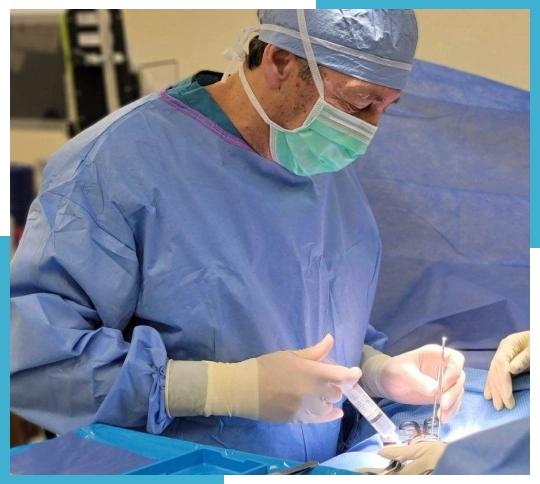Umbilical hernia surgery is a common procedure designed to correct hernias that form around the belly button area. This condition can affect both children and adults, typically arising from a weakness in the abdominal muscles. Understanding the nature of umbilical hernias, the causes, the surgical options available, and what to expect during the recovery period can provide patients with peace of mind and help them prepare for the procedure. This comprehensive guide covers everything you need to know about umbilical hernia surgery, including different surgical methods, recovery tips, and answers to frequently asked questions.
1. What Is an Umbilical Hernia?
An umbilical hernia is a condition in which part of the intestine or fatty tissue pushes through a weak spot in the abdominal muscles near the belly button (navel). It creates a bulge that may be more noticeable when coughing, laughing, or straining. While umbilical hernias are more common in infants, adults can develop them due to increased abdominal pressure. Factors such as obesity, pregnancy, and previous surgeries contribute to the development of this type of hernia. Understanding the underlying cause is crucial in determining the most effective treatment.
2. Causes of Umbilical Hernia
Umbilical hernias are caused by a combination of factors that weaken the abdominal muscles and increase internal pressure. In infants, the condition often results from the incomplete closure of the abdominal wall after birth. In adults, contributing factors include obesity, multiple pregnancies, chronic cough, constipation, and heavy lifting. Genetic predisposition and conditions that cause fluid accumulation in the abdomen (ascites) can also play a role. Recognizing the causes of umbilical hernias is essential for both prevention and treatment, particularly for those at higher risk.
3. Belly Button Hernia Repair Methods
Repairing a belly button hernia typically involves surgery, with the primary goal being to return the protruding tissue to its proper place and reinforce the weakened abdominal wall. The most common methods include open surgery and laparoscopic surgery. Open surgery requires a larger incision at the site of the hernia, allowing the surgeon to push the bulging tissue back into place and sew the abdominal wall closed. Laparoscopic surgery, on the other hand, involves smaller incisions and the use of a camera to guide the repair. Each method has its advantages, and the choice often depends on the size of the hernia, the patient’s overall health, and the surgeon’s expertise.
4. Open vs. Laparoscopic Hernia Surgery
When faced with the need for umbilical hernia surgery, patients must decide between open and laparoscopic procedures. Open hernia surgery involves a direct approach with a single, larger incision that gives the surgeon clear visibility and access to the hernia. This method is often preferred for larger hernias or when complications are anticipated. Laparoscopic hernia surgery, by contrast, involves making several small incisions through which a camera and surgical instruments are inserted. This minimally invasive approach generally results in less post-operative pain and quicker recovery times. However, it may not be suitable for all patients, particularly those with very large hernias or extensive scar tissue from previous surgeries.
5. Pediatric Umbilical Hernia Repair
Pediatric umbilical hernia repair is usually considered when the hernia does not close on its own by the time a child reaches 4 to 5 years of age. While many umbilical hernias in children close without intervention, surgery may be necessary if the hernia persists, becomes larger, or causes pain. The procedure is typically straightforward and involves a small incision near the navel. The surgeon gently pushes the protruding tissue back into place and stitches the abdominal wall. The success rate for pediatric hernia repairs is high, and most children recover quickly with minimal discomfort.
6. Recovery Time for Umbilical Hernia Surgery
The recovery time for umbilical hernia surgery varies depending on several factors, including the patient’s overall health, the size of the hernia, and the type of surgery performed. For most patients, recovery from an open surgery may take 4 to 6 weeks, while those undergoing laparoscopic surgery might return to normal activities in as little as 2 to 4 weeks. During the recovery period, patients are advised to avoid heavy lifting and strenuous activities to prevent strain on the repaired area. Pain management, proper wound care, and following the surgeon’s instructions are crucial for a successful recovery.
7. Risks and Complications of Umbilical Hernia Surgery
Umbilical hernia surgery is generally safe, but like all surgical procedures, it carries certain risks and potential complications. These may include infection, bleeding, and the possibility of the hernia recurring. In rare cases, there may be damage to surrounding tissues or organs. Patients should be aware of these risks and discuss them with their surgeon before undergoing the procedure. Understanding the signs of complications, such as severe pain, redness, swelling, or fever, is essential for seeking timely medical attention and ensuring a positive outcome.
8. Preparing for Umbilical Hernia Surgery
Proper preparation for umbilical hernia surgery can significantly impact the outcome and recovery process. Pre-operative steps typically include undergoing necessary medical tests, such as blood work and imaging studies, to assess the hernia and overall health. Patients are usually instructed to avoid eating or drinking for several hours before surgery and to arrange for someone to drive them home afterward. It’s also important to discuss any medications or supplements being taken, as some may need to be adjusted or stopped before the procedure. Preparing mentally and physically for surgery can help reduce anxiety and promote a smoother recovery.
9. Post-Surgery Care and Recovery Tips
Post-surgery care is a vital part of the healing process after umbilical hernia surgery. Patients should follow their surgeon’s instructions closely, which may include taking prescribed pain medications, keeping the surgical site clean and dry, and gradually resuming normal activities. It’s important to avoid lifting heavy objects or engaging in strenuous exercise until cleared by the surgeon. A balanced diet rich in fiber can help prevent constipation, which can strain the surgical area. Monitoring the incision site for signs of infection, such as redness or unusual drainage, and attending follow-up appointments are key to ensuring a successful recovery.
10. When to Seek Medical Attention Post-Surgery
Although most patients recover from umbilical hernia surgery without complications, it’s crucial to know when to seek medical attention. Signs that require prompt evaluation by a healthcare professional include persistent or worsening pain, fever, redness or swelling at the incision site, and any unusual drainage or bleeding. In some cases, a hernia may recur or a new hernia may develop, necessitating further treatment. Patients should not hesitate to contact their surgeon if they experience any concerning symptoms or if they have questions during their recovery.
FAQs
Q1: What is the typical recovery time for umbilical hernia surgery?
The recovery time for umbilical hernia surgery typically ranges from 2 to 6 weeks, depending on factors such as the patient’s health and the type of surgery performed. Patients undergoing laparoscopic surgery may experience a quicker recovery compared to those having open surgery.
Q2: How do open and laparoscopic hernia surgeries differ?
Open hernia surgery involves a single, larger incision that provides direct access to the hernia, making it suitable for larger or more complicated hernias. Laparoscopic surgery uses smaller incisions and a camera to guide the procedure, offering a minimally invasive option with potentially shorter recovery times.
Q3: Is pediatric umbilical hernia repair necessary?
Pediatric umbilical hernia repair is generally recommended if the hernia has not closed naturally by the age of 4 to 5 years. Early repair can prevent complications and ensure a quick and effective recovery for the child.
Conclusion: Strengthening Your Abdominal Wall with Umbilical Hernia Surgery
Umbilical hernia surgery offers a reliable solution for repairing hernias and reinforcing the abdominal wall. Whether addressing the condition in children or adults, the surgery provides long-term relief and reduces the risk of complications. By understanding the procedure, recovery process, and potential risks, patients can make informed decisions and approach their surgery with confidence. To learn more about umbilical hernia surgery or to explore your treatment options, visit our website.




